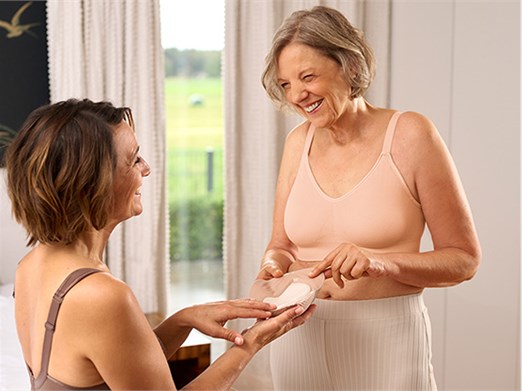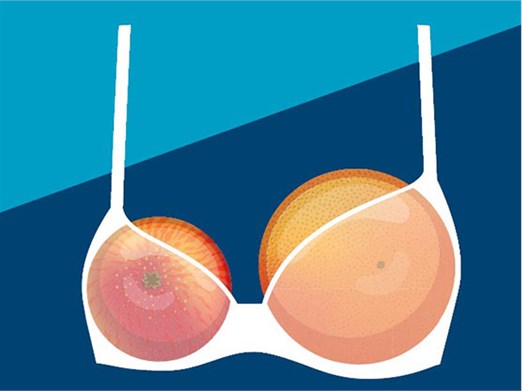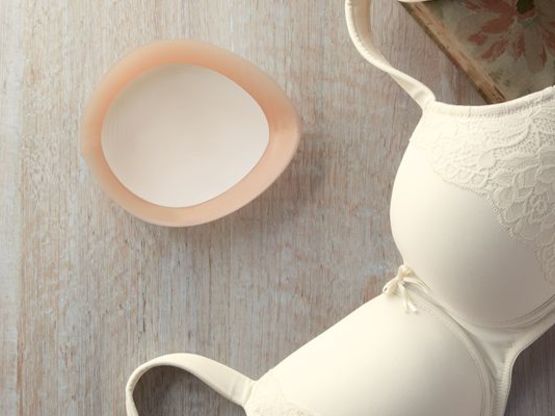Exercise for Various Breast Cancer Related Conditions
 By Annie Toglia
By Annie Toglia
with “Staying Abreast”®
When I was diagnosed with breast cancer in 1996, I was so blind-sided and lost in the riptide of shock waves, that my only defense was to forge ahead diligently in my two year “marathon for life” and to avail myself of every traditional and complementary therapy that could help expedite my recovery. Having been a sports med personal trainer since 1983, I knew that I had no other option but to incorporate exercise into my daily routine. Physical therapy became a way of life for me during the years of treatments and surgeries following my initial mastectomy with tram flap reconstruction. My physicians and nurses were so amazed by my strength and my ability to recuperate in record time that they began to refer their patients to me. In time, they inspired me to develop my book and web site in order to help other women improve their recovery, reduce risks of postsurgery or treatment-related conditions, and alleviate symptoms and side effects.
There are many different health issues to consider while fighting or living with breast cancer. At first, many of us are intent upon “just getting through” the surgeries, radiation and chemotherapy. We often close our eyes and ears and ignore the warning words of our physicians in order to soften the edges of the long roller coaster ride ahead. Then one day, we awaken from the self-induced haze, and we are suddenly burning and ripping from hot flashes; we are exhausted from sleep deprivation; our muscles ache; our hands and feet are numb or burning from neuropathy; our bones are weaker; our metabolisms are spiraling downward, and our weight is spiraling upward before our eyes. We have little recourse to eliminate these symptoms permanently, but we do have the potential to improve our lives significantly…through exercise!
It is now universally known that post-surgery exercises are critical for reducing the risk of lymphedema and frozen shoulder. Initially, I formatted Staying Abreast® chronologically to correspond with the acute healing stages of surgery and reconstruction. However, while formulating the final sequence, I began (urgently) to add exercises that are typically overlooked in breast cancer rehabilitation. They address the chronic conditions: fatigue, low blood counts, lymphedema, muscle atrophy, bone pain, neuropathy, aching muscles, decreased bone density, weight gain, increased body fat, and decreased metabolism -- all of which I have experienced.
The following are samplings of Staying Abreast® exercises to help combat those conditions.
Read directions carefully. - Practice first. - Move slowly/smoothly. - Exhale on the exertion. - Warm up actively. - Stretch/cool down slowly. - Stabilize exercise postures: Exhale, contract abdominals, neck straight, shoulders back.
Note: Please discuss all exercises with your physicians before beginning a new regimen.
1. To Improve flexibility; relieve shoulder pain/ tension:
Front Bar, Side Push
Stand tall – neck straight. Hands - 2 ft. apart. Palm up on right hand, palm down on left, thumbs extended to right. Inhale. Exhale, push bar to right. Inhale, return to center. 1 or 2 sets of 5 – 8. Change hands; thumbs extended to left. Inhale. Exhale, push bar to left. Inhale, return to center. (Do not twist or move torso.) (For bone density, wrap 1 – 2 lb. ankle weight around bar to add resistance.) See diagram below.
2. To strengthen upper back shoulder area and improve posture.
Prone Butterflies: Kneel (tuck toes under), lie on ball, abdominals contracted, eyes focused downward. Exhale and lift arms, pinch shoulder blades together, hold. Inhale, lower arms slowly. 1 or 2 sets of 5 - 8 repetitions. (For bone density, add 1 or 2 lb. dumbbells - no substitutes. Do not bend wrists.) See diagram below.
3. To Increase flexibility/circulation in feet/calves. Relieve numbness/ foot pain from neuropathy
Seated Foot Stretches
Sit tall - feet flat. Lift thigh; knee bent. Inhale, flex foot upward. Exhale, slowly point foot downward or make large circles (ankle through toes). 2 sets of 5 – 10 on each foot.
4. To Strengthen legs, hips, core muscles; improve bone density; trigger metabolism
Chair Squats/ Arms Extended (great for warm-up): Stand very tall, arms extended or crossed on chest. Inhale. Exhale, contract abdominals and sit slowly. Inhale. Exhale, contract abdominals and stand slowly (heels pressed down). 1 or 2 sets of 6 - 10. Think up going down and think down going up.
5. To Increase strength/stability in spine/lower abdomen/hip area
Spinal Stabilization-Opposite Arm and Leg Extension: Kneel on all fours or lie on a ball. Inhale. Exhale, contract abdominals and slowly reach left arm forward while sliding right leg backward (stretching from fingers to toes). Inhale; release. Exhale and repeat on right arm and left leg. 1 or 2 sets of 6 – 10.
6. To Improve abdominal/leg strength and spinal stability
Double Leg Curl/Ball: Lie with cushion under head, arms at sides, shoulders back, chin down. Heels on center of ball, feet flexed flat, knees bent - 90 degrees, abdominals contracted with waist pressed into floor. Inhale. Press heels down, exhale and slowly roll ball forward until legs are almost straight. Inhale. Press heels/calves down, exhale and slowly roll ball back into thighs. 1 - 2 sets of 6 - 10. *TRAM flap: Wait 10 weeks; apply light pressure on ball; move slowly. *Advance: Raise pelvis 2 in. off floor, and/or apply more pressure on ball.
7. Increase strength/ flexibility in calves/ feet. (Standing, weight-bearing position improves bone density)
Calf Stretches – flexibility Calf Raises: Stand tall, feet slightly apart. Inhale. Exhale, press heels down firmly. (Variation: Rise up on toes.) Inhale, release. 10 repetitions each. * Perform more actively to warm up.
8. Relieve pain/stress in neck and shoulders
Neck/Chest Stretch
Sit tall. Clasp hands at base of head, elbows back. Inhale. Fold elbows in, exhale, head down, press down to stretch neck. Inhale, lift up. Exhale, lift chest high, push elbows back, stretch chest and ribcage. 3 - 6 times. (Stretch upper back: drop shoulders forward 3 - 4 inches. For mid-back, drop shoulders 6 inches.)
9. Above and Beyond
A 20-minute interval/circuit training program for weight loss, improved muscle tone, increased bone density, cardiovascular conditioning, increased percentage of lean muscle mass, and decreased percentage of body fat. (4 of 20 exercises from the full program)
*Please note: Cancer patients should discuss an exercise regimen with their physician before starting or adopting a new routine.
Moving Forward
“Try to get out of bed and on your feet as soon as possible. If you can walk or exercise for only one minute at a time, that is better than nothing at all. I believe that if you can stand tall ‘in your body’, you’ll stand taller in your heart, and you’ll have more strength to fight.”
For information regarding the posters and book, ‘Staying Abreast, Rehabilitation Exercises for Breast Cancer Surgery”, go to www.stayingabreast.com.







